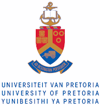
The Altar is part of the “One and the Many” exhibition and contains art about religion, spirituality and secular icons – Photo credit: Anthea Pokroy
Six artists were invited to take part. Their artworks range from a large red sail, weighted at the bottom with salt packs, that extends across all three floors of the building; to opulent paintings of the late business mogul, Richard Maponya and his wife; and a bulbous, inflatable, gold-coloured sculpture filled with air.
But the exhibition, titled One and the Many, is not just about the work of these invited artists. Their art comments on the work of 82 other artists on show, selected from three collections housed at Javett-UP, and the effect is an extraordinary conversation.
The invited artists are Stephané E Conradie, Goldendean, Ledelle Moe, Abdus Salaam, Inga Somdyala and Katlego Tlabela. The three collections they have been invited to comment on with their art are from the South32 (formerly
Gencor), Javett Family and the Bongi Dhlomo collections, which include works by the likes of Dumile Feni, Marlene Dumas, Gerard Sekoto, William Kentridge, and Jane Alexander.

Guests view One and the Many exhibitions at the opening night at Javett-UP - Credit Tatenda Chidora.
Although visitors will have the chance to attend walkabouts where they can find out more, even if you don’t know which works are by the invited artists and which are from the collections, it does not detract from the experience.
One and the Many is intense and exhilarating. Whether it is the section called The Altar, which places art about religion, spirituality and secular icons on a low stage; the part titled The Garden, which features art exploring the outdoors; or Embrace, which looks at warm, unwanted and absent embraces, the conversation relies entirely on the visual display, and viewers’ experiences of it.
The focus is on the art, not wordy explanations. Ultimately the exhibition is a story, with the art forming the characters, the setting, the plot and the themes. And the writer of this story is its curator, Storm Janse van Rensburg.

Prof Caroline Nicholson welcomes guests at the exhibition's opening night - Credit Tatenda Chidora.
“Sometimes we have very narrow ways, restricted ways, of telling these stories. How can we group things, maybe slightly differently than they might have been done before, and I'm not talking about breaking new ground, but can we look maybe at more emotive connections between things for stories to emerge?” he said.
The exhibition’s title One and the Many refers to the individual in relation to others, what Janse van Rensburg said can be seen “from an African humanist perspective, of I am because of you”.
He refers to the exhibition as “weaving narratives”. These narratives, or stories, are divided into three main ideas, or what the exhibition names as chapters, two of which are further split into three sections, and the effect is almost like seven exhibitions packed into one. Some of the artworks from the collections have not been seen in public for years, and some of the perhaps more familiar works are given a fresh perspective through the way Janse van Rensburg has juxtaposed them.

Inflatable sculpture by Goldendean placed in dialogue with works by other artists - Credit Anthea Pokroy.
At One and the Many’s official opening in July, acting CEO, Jackie Rens, announced Janse van Rensburg as Javett UP’s new interim curatorial director. The University of Pretoria’s registrar and Javett-UP board member, Professor Caroline Nicholson, introduced him as “the man of the moment”. This is an apt badge of honour. Janse van Rensburg, whose national and international experience includes being senior curator at Zeitz Museum of Contemporary African Art in Cape Town, is the visionary behind One and the Many.
Without his playful articulation in selecting and placing works from the Javett-UP collections, and his knowledge and insight into contemporary South African art to invite such a diverse and cutting-edge group of artists to comment on the artworks, One and the Many would not have the same impact. “He brings exactly the kind of energy and vision that the Javett-UP is looking for as we enter this new chapter,” said Rens.
Janse van Rensburg extended an invitation to guests. “I invite you to look at these objects and these artworks and listen to what they're telling you. I invite you to make your own connections. Question carefully, listen and look, and be open to what the images and artworks here are telling us,” he said.
The different sections of One and the Many are on view for varying durations.
Chapter 3, called Colossal Time, which includes the works of two of the invited artists – two large concrete sculptures by Moe and a video by Salaam with its haunting soundscape – closes in early 2026.
Chapter 2, which looks into the politics of image-making, histories and forms of embrace through sections titled Image Worlds/World Images, Tswelopele, and Embrace, and features the work of invited artists Tlabela, Conradie and Goldendean, is on until next year.
Chapter 1 on the ground floor of the building, which includes the sections, the Altar, Fractured Forms - about how fragments can lead to new forms - and The Garden, and features the site-specific work of invited artist, Somdyala, is on show for two years. The Australian High Commission has provided funding for educational resources to accompany this Living School part of the exhibition.
































